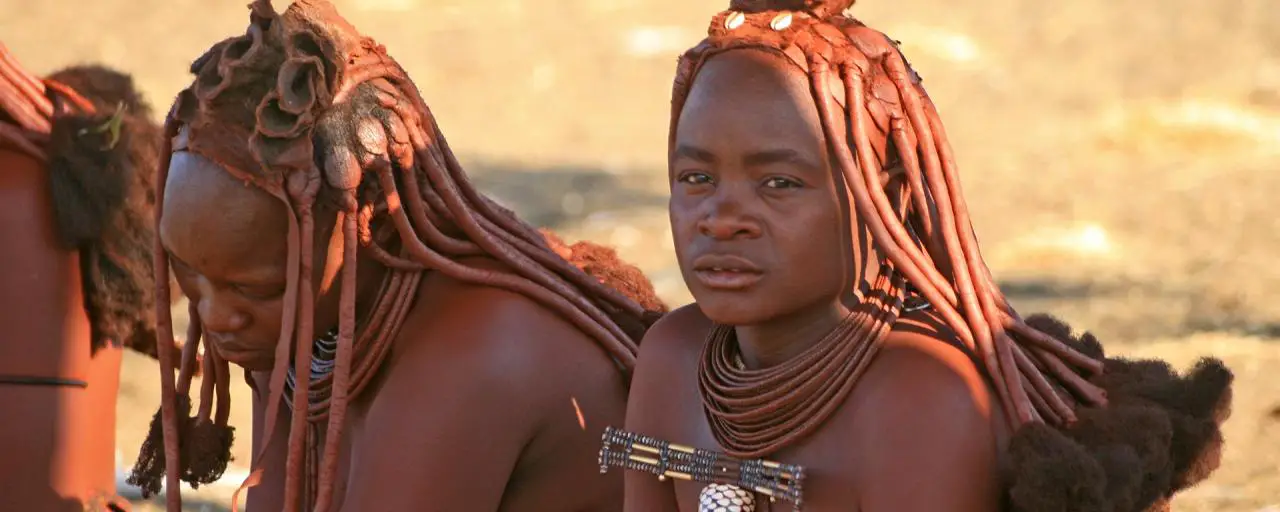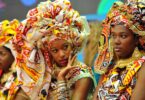Africa is home to a diverse population, with an estimated 3,000 tribes spread across the continent.
There are 54 countries on the African continent, with 1.3 billion inhabitants. Many Africans are members of one of the estimated 3,000 tribes, each with its unique accent and culture. In modern African history, almost 300 years of colonization have left an indelible effect on the continent’s population and customs.
When colonial powers drew up new national borders, they paid little attention to tribes and tribal territory, resulting in modern-day countries with little similarity to tribal regions. As a result of the continent’s colonization, some tribes have died out, others have merged or divided, and some new African tribes have emerged.
What is a tribe?
A ‘tribe’ is a group of people who share the same culture and dialect and are related by social, economic, religious, or biological ties.
Also read: Nigerian Fashion Dazzles Kenyans At June Ruto’s Engagement
Few people travelled away from their tribal communities in the days when African life was essentially rural. The expansion of cities in the twentieth century began to change this, as more people relocated to towns and cities in search of work rather than living on a subsistence level. Tribal influences are still a significant force in how people live, talk, and behave in many African regions (predominantly rural areas).
With this in mind, we’ve selected ten of Africa’s most iconic tribes, with a focus on East and Southern Africa’s important safari regions:
Hadzabe of Tanzania

Hadza Tribe. [Photo: Wikipedia]
There have been efforts to resettle the Hadza since Europeans arrived in the late 1800s and after that via several successive Tanzanian administrations. These efforts have generally failed, and the Hadza continue to live in the same way as their forefathers did hundreds of years ago.
The Hadzabe live in a highly egalitarian society with no ruling hierarchy or disparities in individual rank. The children are raised cooperatively. Foraging and hunting take up a lot of time. Depending on availability, women forage in larger numbers for berries, fruit, and tubers. Hadza men typically forage alone, nourishing themselves and bringing fruit or honey home when possible. They also hunt wildlife with bows and poisoned arrows, waiting in watering holes overnight.
Ethiopia’s Hamar

Hamar Tribe in Ethiopia. [Photo: YouTube]
Namibian Himba

Himba Tribe Namibia. [Photo: Exploring Africa]
The women of the Himba tribe are known for their red-tinged complexions and thick, red hair in intricate hairstyles, which contribute to the group’s iconic position. Himba women’s hair is used to indicate their age and status, beginning with shaved heads for small children, then braids and plaits, and finally a leather adornment known as an Erembe for women who have had children. Their distinctive red colour derives from a daily application of ochre, lard, and butter to their skin and hair to protect them from the sun and insect bites, as well as to beautify themselves.
Ethiopia’s Karo
The small Karo (or Kara) tribe lives on the banks of the Omo River in Southern Ethiopia, seemingly unspoiled by the outside world. They survive by cultivating flood-relief crops, farming beans and maize, rearing cattle and goats, and fishing. They’re known for their elaborate face and body painting, which they do with a mixture of white chalk, charcoal, yellow rock, and iron ore to create some incredibly striking body artworks.
The tribe also engages in ritual scarification, which entails cutting oneself with a knife or razor and then rubbing ash into the wound to increase it over time. Men scarify their chests to depict the slaying of foes or deadly animals, while women construct intricate scarring patterns on their chests, stomachs, or backs to be deemed mature and lovely. The Karo, like their Hamar tribal neighbours, had a “bull jumping” event to mark the coming of age of young men.
Also read: Mind-Blowing May Festivals In South Africa
Kenya and Tanzania’s Masai people

Maasai culture. [Photo: Maaasai Mara Holidays]
The Maasai are warriors whose ancestors can be traced back to Sudan’s northern Great Rift Valley. The tribe is now semi-nomadic, herding cattle that they believe were given to them by the sky god Ngai, who lowered them to earth on a leather thong. Cattle are revered and exploited as a source of income and nourishment, with the Maasai diet supplemented by a mixture of cow milk and blood.
A jumping dance, the wearing of colourful robes, and ceremonial spitting are all part of the Maasai tradition and drinking blood.
Kenya’s San Bushmen
The San people, recognized as the earliest inhabitants of South Africa, are among the world’s oldest tribes and traditional hunter-gatherers. In today’s Botswana, Namibia, Angola, Zambia, Zimbabwe, Lesotho, and South Africa, their descendants’ number over 100,000. The San are known for their tracking abilities and their ability to hunt and survive in the seemingly desolate areas of Southern Africa’s deserts. When they communicate, they emit a distinct and recognizable clicking sound. The San, also known as Kalahari bushmen, are the people who created the cave and rock art that can be found throughout the region, some of which dates back thousands of years. They painted their trademark pictures of hunters and other animal prey with mineral paints, ochre, eggs, and blood. The San bushmen’s traditional lifestyle is now limited to narrow areas surrounding Botswana’s spectacular Makgadikgadi Pan. They’ve lost their capacity to cover broad ranges due to the development of enormous national parks and greater acreage dedicated to farming and mining.
Kenya’s Samburu

Samburu culture Kenya. [Photo: Arts of Safari]
South Africa’s Ndebele tribe

Ndebele people South Africa. [Photo: Exploring Africa]
Invasion of present-day Zimbabwe by the Ndebele began in the late 1830s, fifty years before the actual main European incursion. They formed a formidable new nation in the south-western highveld near present-day Bulawayo, with the power to extract tribute from surrounding Shona tribes. The area in which the Ndebele settled was semi-arid, making it unsuitable for agriculture. This made them concentrate on cattle rearing, and they were known to raid other tribes for cattle and women. Its thought that the prevalence of beautiful woman amongst the Ndebele tribe is a direct result of this raiding practice.
South Africa’s Xhosa

Xhosa South Africa. [Photo: Buzz South Africa]
Zulu, South Africa

Zulu Culture .[Photo: Nomad Africa Magazine]

Maasai Culture in Kenya and Tanzania. [Photo: Maasai Mara Holidays]
Under the leadership of King Shaka in the early nineteenth century, the Zulu ethnic group grew into a strong empire, earning a fearsome reputation that is still remembered today. Modern Zulus, on the other hand, are forward-thinking and progressive. While the traditional dress is reserved for special occasions such as weddings and funerals, the Zulu maintains strong ties to their history and culture by offering sacrifices to ancestral spirits who impact their daily lives.
Also read: Namibia’s Hima Tribe With Weirdest Guest Culture
The Zulu are accomplished artisans, especially when it comes to beading, which is weaved into beautiful, colourful designs that are both decorative and symbolic. The number and form of triangles correspond to the wearer’s sex and parental status. The colours have their symbolism, which revolves around life’s duality — for example, red represents both love and passion and rage and sadness.
If you want to learn more about these African tribes and perhaps experience their way of life, tourism allows you to do so. A visit to a tribal village can be included in your safari itinerary by several safari operators.








